
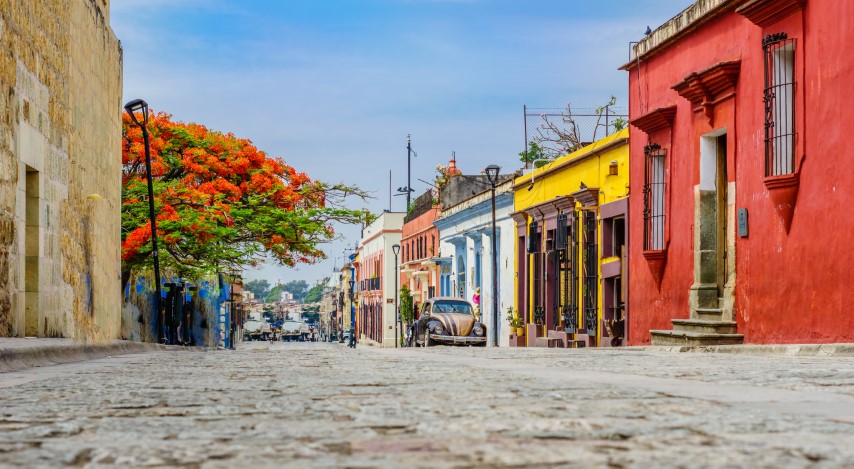
Oaxaca is a culturally rich state in southern Mexico. It is known for its vibrant traditions and diverse landscapes.
Nestled in southern Mexico, Oaxaca offers a unique blend of history, culture, and natural beauty. The region boasts stunning colonial architecture, lively markets, and colourful festivals that celebrate indigenous traditions. Its diverse landscapes range from lush mountains to sun-kissed beaches, making it a paradise for nature lovers.
Oaxaca’s rich culinary scene, featuring dishes like mole and tlayudas, attracts food enthusiasts from around the world. The state is also renowned for its artisanal crafts, including textiles and pottery. Visitors can explore ancient ruins, vibrant towns, and serene coastlines, experiencing the true essence of Mexican heritage.
History Of Oaxaca
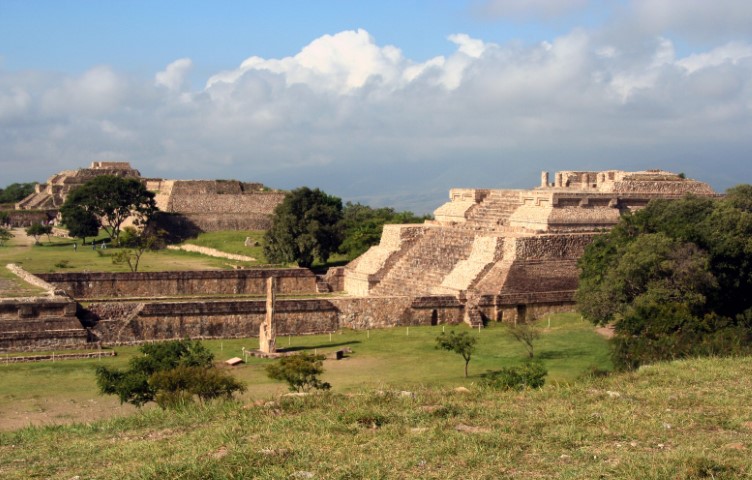
Oaxaca tourism, a state in southern Mexico, has a rich tapestry of history that spans thousands of years. Known for its vibrant culture, ancient ruins, and stunning landscapes, Oaxaca’s history is a fascinating journey through time. Let’s explore the History of Oaxaca tourism through its various eras.
Pre-columbian Era
The Pre-Columbian Era in Oaxaca saw the rise of advanced civilizations, including the Zapotecs and Mixtecs. These ancient peoples thrived long before the arrival of Europeans.
The Zapotec civilization emerged around 500 BCE. They built the magnificent city of Monte Albán, which became a major cultural and political center. Monte Albán features impressive pyramids, palaces, and a ball court, showcasing their architectural prowess.
The Mixtecs followed, around 900 CE. They were skilled artisans known for their intricate gold work and codices. The Mixtecs and Zapotecs often engaged in trade and conflict, shaping the region’s history.
Key features of the Pre-Columbian Era include:
- Monte Albán: A major archaeological site.
- Zapotec writing system: One of the earliest in Mesoamerica.
- Mixtec codices: Illustrated manuscripts that tell their history and myths.
The legacy of these civilizations is still evident in Oaxaca’s cultural heritage today.
Spanish Conquest
The Spanish Conquest began in the early 16th century when Spanish explorers, led by Hernán Cortés, arrived in the region. The conquest brought profound changes to Oaxaca.
In 1521, the Spanish defeated the Aztec Empire and extended their control over Oaxaca. They introduced Christianity, built churches, and established colonial towns. The Spanish also exploited the region’s rich natural resources, such as gold and silver.
Key events during the Spanish Conquest include:
- 1521: The fall of the Aztec Empire.
- 1529: The founding of Oaxaca City by Francisco de Orozco.
- Colonial architecture: The construction of beautiful churches and buildings.
The Spanish influence transformed Oaxaca’s culture, language, and religion, leaving a lasting impact that is still visible today.
Independence And Modern Era
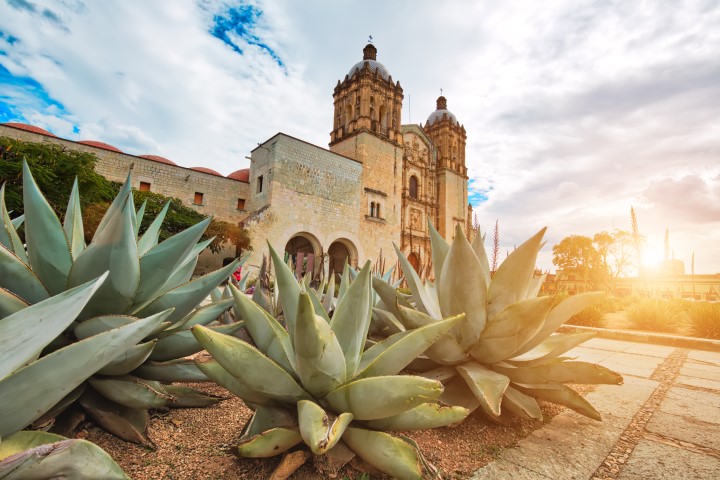
The Independence and Modern Era began in the early 19th century. Mexico gained independence from Spain in 1821, and Oaxaca played a significant role in the struggle.
Oaxaca contributed to the independence movement through leaders like José María Morelos and Vicente Guerrero. The state continued to be influential in Mexico’s political landscape.
Key milestones in the Independence and Modern Era include:
- 1821: Mexico’s independence from Spain.
- 1861: The presidency of Benito Juárez, a native of Oaxaca.
- Modern development: Growth in tourism and preservation of cultural heritage.
Today, Oaxaca is known for its rich cultural traditions, vibrant festivals, and beautiful landscapes. Its history continues to shape its identity and attract visitors from around the world.
Culture And Traditions
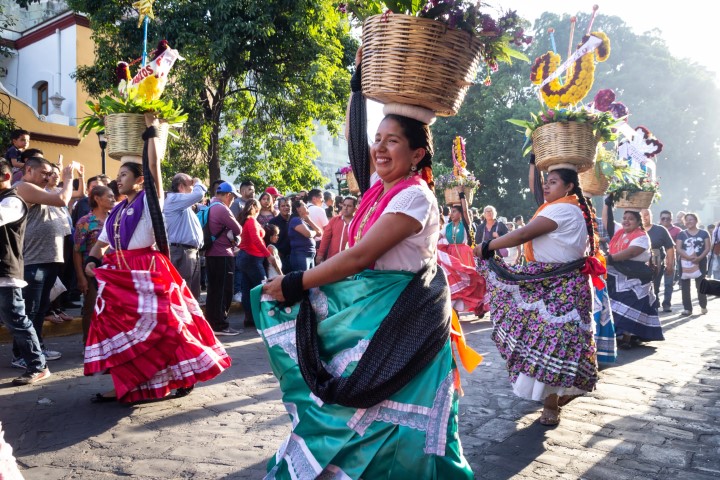
Oaxaca, a state in southern Mexico, is known for its rich culture and traditions. The vibrant colors, music, and food are just a glimpse of what makes Oaxaca so special. This region is a blend of ancient practices and modern influences, creating a unique cultural tapestry. Let’s dive into the fascinating world of Oaxaca’s culture and traditions.
Indigenous Influence
Oaxaca’s indigenous roots run deep. The state is home to 16 indigenous groups, each with its own language and customs. This diversity contributes to a rich cultural landscape. The Zapotec and Mixtec are the largest groups. Their influence is seen in everything from architecture to daily life.
Traditional clothing is an essential aspect of indigenous culture. Women often wear colorful dresses called “huipiles,” adorned with intricate patterns. Men wear “calzones de manta,” lightweight cotton trousers, perfect for the warm climate.
| Indigenous Group | Main Language | Traditional Clothing |
|---|---|---|
| Zapotec | Zapotec | Huipiles, Calzones de manta |
| Mixtec | Mixtec | Huipiles, Calzones de manta |
Handicrafts are another significant element. The indigenous communities produce beautiful textiles, pottery, and wood carvings. These crafts often feature traditional symbols and patterns, passed down through generations. Markets in Oaxaca City and surrounding towns offer a glimpse into this artistic heritage.
Festivals And Celebrations

Oaxaca is famous for its vibrant festivals. These events are a blend of indigenous and Spanish traditions. They are colorful, lively, and deeply spiritual. Guelaguetza is one of the most renowned festivals. It takes place in July and showcases traditional music, dance, and costumes from various indigenous groups.
Day of the Dead or “Día de los Muertos” is another significant celebration. Families create altars to honor their deceased loved ones. These altars are decorated with marigolds, candles, and favorite foods of the departed. The streets are filled with parades, music, and people dressed in skeleton costumes.
- Guelaguetza – July, traditional music, dance
- Day of the Dead – November, altars, parades
- Noche de Rábanos – December 23, radish carving contest
Noche de Rábanos or “Night of the Radishes” is a unique festival held on December 23. Participants carve radishes into elaborate scenes. It’s a fun, creative event that draws both locals and tourists.
These festivals are not just celebrations; they are a way for the people of Oaxaca to connect with their heritage. Through music, dance, and food, they keep their traditions alive and share them with the world.
Cuisine Of Oaxaca
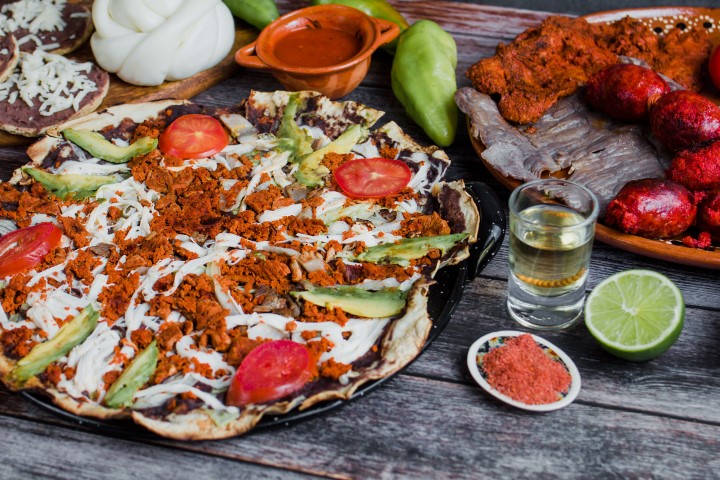
Oaxaca, a state in southern Mexico, is known for its rich culture and vibrant traditions. The cuisine of Oaxaca is a true reflection of its diverse cultural heritage, blending indigenous ingredients with Spanish influences. The food here is full of bold flavors, unique ingredients, and time-honored recipes passed down through generations.
Traditional Ingredients
The cuisine of Oaxaca is renowned for its use of traditional ingredients that are both locally sourced and unique to the region. These ingredients form the foundation of many Oaxacan dishes and give them their distinct flavors.
Some of the most important ingredients include:
- Maize: Corn is a staple in Oaxacan cuisine, used in tortillas, tamales, and more.
- Chilies: Various types of chilies, such as pasilla, ancho, and guajillo, add heat and depth to dishes.
- Chocolate: Oaxacan chocolate is often used in beverages and mole sauces.
- Herbs: Herbs like epazote and hoja santa are commonly used to season dishes.
- Cheese: Oaxaca cheese, known for its stringy texture, is a key ingredient in many recipes.
Here’s a table summarizing some key traditional ingredients and their uses:
| Ingredient | Use |
|---|---|
| Maize | Tortillas, tamales, tlayudas |
| Chilies | Salsas, moles, stews |
| Chocolate | Mole sauces, beverages |
| Herbs | Seasoning, flavoring |
| Oaxaca Cheese | Quesadillas, tlayudas |
Famous Dishes
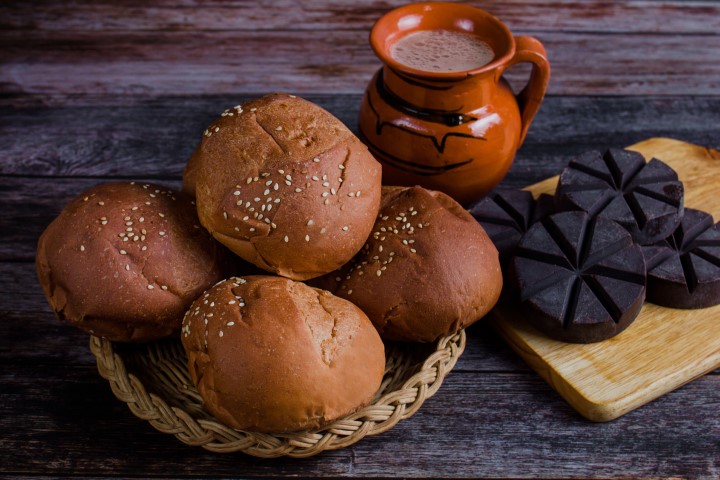
Oaxaca is famous for its diverse and flavorful dishes. Each dish tells a story of the region’s rich culinary history.
Some of the most famous dishes include:
- Mole: Oaxaca is known as the land of seven moles. Each mole is a complex sauce made from chilies, spices, and chocolate.
- Tlayudas: Often referred to as Oaxacan pizzas, these are large, crispy tortillas topped with beans, cheese, meat, and salsa.
- Chapulines: These are grasshoppers seasoned with chili and lime, offering a crunchy snack that is both unique and tasty.
- Memelas: Thick tortillas topped with beans, cheese, and salsa, similar to an open-faced taco.
- Enchiladas de Mole: Tortillas filled with chicken or cheese, smothered in rich mole sauce.
Here’s a quick summary of some famous dishes and their main ingredients:
| Dish | Main Ingredients |
|---|---|
| Mole | Chilies, chocolate, spices |
| Tlayudas | Tortilla, beans, cheese, meat |
| Chapulines | Grasshoppers, chili, lime |
| Memelas | Tortilla, beans, cheese |
| Enchiladas de Mole | Tortillas, chicken, mole sauce |
Natural Beauty
Oaxaca is a jewel in southern Mexico, known for its vibrant culture and rich history. But what truly captivates visitors is its natural beauty. With diverse landscapes and abundant ecotourism activities, Oaxaca offers a paradise for nature lovers.
Landscape

The landscape of Oaxaca is incredibly diverse. From golden beaches to lush mountains, it has everything. The Sierra Madre del Sur mountains offer breathtaking views. The beaches of Huatulco and Puerto Escondido are perfect for relaxation.
Here are some key features of Oaxaca’s landscape:
- Mountain Ranges: The Sierra Madre del Sur mountains are a haven for hikers.
- Beaches: Huatulco and Puerto Escondido offer golden sands and clear waters.
- Valleys: The Central Valleys are famous for their fertile lands.
Oaxaca’s natural parks are also worth mentioning. The Hierve el Agua is a set of natural rock formations that resemble waterfalls. The Sumidero Canyon is another must-visit. It offers boat tours through towering cliffs.
Ecotourism
Oaxaca is a leader in ecotourism. Visitors can enjoy many activities while respecting nature. Bird-watching, hiking, and guided eco-tours are popular options.
Here are some top ecotourism activities in Oaxaca:
- Bird-Watching: Spot rare species in the Sierra Norte mountains.
- Hiking: Explore trails in the Sierra Madre del Sur.
- Eco-Tours: Guided tours in natural parks and reserves.
Oaxaca also offers sustainable accommodations. Eco-lodges and sustainable hotels provide comfort while minimizing environmental impact. The local communities play a big role in ecotourism. They offer authentic experiences and preserve the natural beauty.
In summary, Oaxaca’s natural beauty and commitment to ecotourism make it a must-visit destination. Its diverse landscapes and eco-friendly activities offer something for everyone.
Arts And Crafts

Oaxaca is a magical place known for its vibrant culture and colorful traditions. One of the highlights of this region is its rich array of arts and crafts. The local artisans create beautiful works that reflect Oaxaca’s heritage and creativity. Let’s dive into the amazing world of textiles, pottery, and the famous artisans who bring these crafts to life.
Textiles And Pottery
Oaxaca is famous for its stunning textiles and intricate pottery. The textiles are often made using traditional looms and natural dyes. These textiles come in various forms, including:
- Rugs with bold patterns
- Shawls with intricate designs
- Table runners with vibrant colors
The pottery of Oaxaca is equally impressive. Artisans use ancient techniques to create beautiful pieces. Many of these techniques have been passed down through generations. Popular types of pottery include:
- Black pottery (barro negro)
- Red clay pottery (barro rojo)
- Green glazed pottery (barro verde)
Each piece of pottery tells a story and shows the skill of its maker. The unique styles and materials make Oaxacan pottery highly sought after by collectors and tourists alike.
Famous Artisans
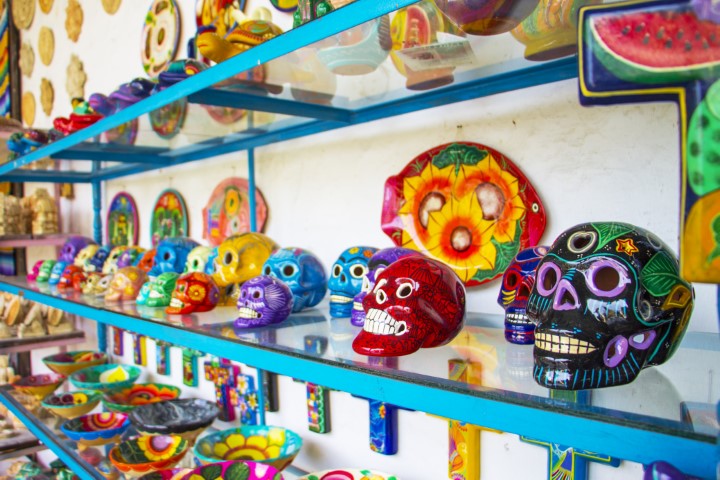
Oaxaca is home to many famous artisans who excel in their craft. These artisans often come from families who have been practicing their art for generations. Here are a few notable names:
- Doña Rosa: Known for her black pottery in San Bartolo Coyotepec.
- Francisco Toledo: A renowned painter, sculptor, and graphic artist.
- Teotitlán del Valle: A village famous for its weavers and beautiful rugs.
These artisans not only preserve ancient techniques but also innovate within their craft. For instance, Doña Rosa’s black pottery is famous for its shiny, almost metallic finish. This effect is achieved by polishing the clay before firing it in a pit kiln.
Francisco Toledo’s work, on the other hand, often incorporates elements of nature and indigenous culture. His pieces are displayed in galleries around the world. He also founded several cultural institutions in Oaxaca, helping to preserve and promote local arts.
The weavers of Teotitlán del Valle use traditional looms and natural dyes. They create intricate patterns that often tell stories of their heritage. Their rugs are not just functional items but also pieces of art that capture the essence of Oaxacan culture.
Economic Significance
Oaxaca, a vibrant state in southern Mexico, is renowned for its rich culture and history. The region’s economic significance stems from its thriving agriculture and booming tourism industry. These sectors play a crucial role in the livelihood of its residents and the state’s overall growth.
Agriculture
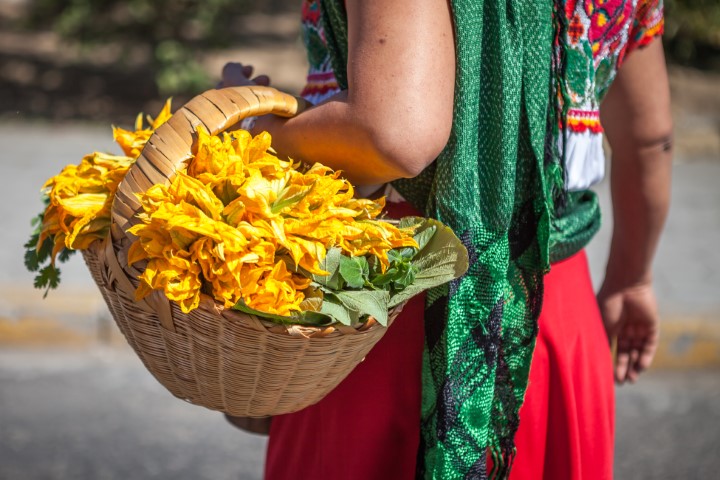
Agriculture is a cornerstone of Oaxaca’s economy. The state boasts a diverse range of crops, thanks to its varied climate and fertile soil. Farmers grow corn, beans, coffee, and cacao, among other produce.
Oaxacan coffee is world-famous. The region’s high-altitude areas provide the perfect conditions for coffee cultivation. Similarly, cacao from Oaxaca is highly prized for its quality and flavor.
- Corn: A staple in the Oaxacan diet and used in many traditional dishes.
- Beans: Another essential crop, often grown alongside corn.
- Coffee: Known for its rich flavor and grown in the highlands.
- Cacao: Used to make premium chocolate and traditional beverages.
Oaxaca also excels in the production of agave plants, which are used to make mezcal. This traditional spirit is a significant export product, contributing greatly to the local economy.
Tourism
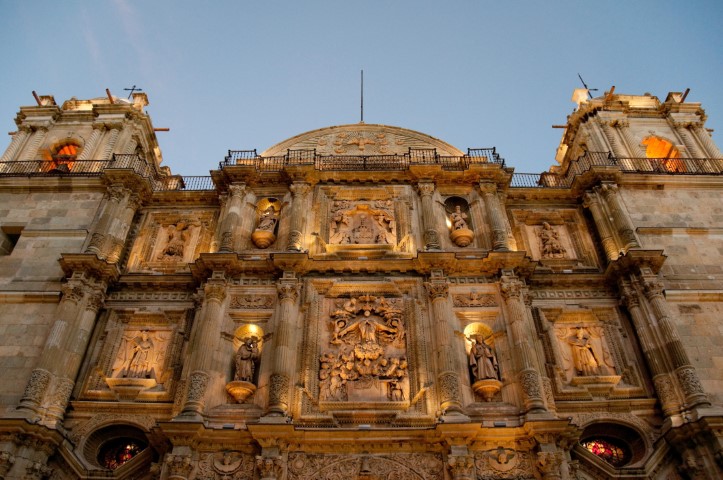
Tourism is another vital sector in Oaxaca’s economy. The state attracts visitors with its beautiful landscapes, historic sites, and vibrant festivals.
Popular tourist destinations include:
- Monte Albán: An ancient Zapotec city with stunning ruins.
- Hierve el Agua: Natural rock formations and mineral springs.
- Oaxaca City: The capital city, known for its colonial architecture and lively markets.
- Beaches: Coastal areas like Puerto Escondido and Huatulco offer pristine beaches and water activities.
The annual Guelaguetza festival draws thousands of visitors. This cultural event celebrates traditional music, dance, and costumes, showcasing Oaxaca’s rich heritage.
Tourism not only boosts the economy but also provides employment opportunities for locals. Artisans, guides, and hotel staff all benefit from the influx of visitors.
Challenges And Opportunities
Oaxaca, a region rich in culture and natural beauty, faces a unique blend of challenges and opportunities. While it boasts stunning landscapes and vibrant traditions, it also grapples with social issues and the need for sustainable development. Understanding these dynamics is key to fostering a brighter future for its residents and preserving its heritage.
Social Issues
Oaxaca’s social fabric is intricate and diverse, but it also faces significant challenges. One of the primary social issues is poverty. Many communities, especially in rural areas, live below the poverty line. Limited access to education and healthcare compounds this problem.
Another pressing issue is migration. Many young people leave Oaxaca in search of better opportunities in other parts of Mexico or the United States. This migration often leads to a brain drain, where educated and skilled individuals leave, hampering local development.
Indigenous rights are also a critical concern. Oaxaca is home to numerous indigenous groups, each with its own language and traditions. Unfortunately, these communities often face discrimination and lack political representation. Efforts to preserve their culture and rights are ongoing but face many obstacles.
| Social Issue | Description |
|---|---|
| Poverty | High rates, especially in rural areas |
| Migration | Young people leave for better opportunities |
| Indigenous Rights | Discrimination and lack of representation |
- Limited access to education and healthcare.
- High rates of poverty in rural areas.
- Ongoing struggle for indigenous rights.
- Migration leading to a brain drain.
Sustainable Development
Oaxaca has immense potential for sustainable development. One key area is ecotourism. The region’s natural beauty and rich cultural heritage attract tourists from around the world. Promoting ecotourism can create jobs while preserving the environment.
Agriculture is another sector with significant opportunities. Emphasizing organic farming and fair trade practices can improve the livelihoods of local farmers. These practices are also more environmentally friendly.
Investing in renewable energy is crucial for sustainable development. Oaxaca has abundant natural resources, including wind and solar energy. Harnessing these resources can reduce dependence on fossil fuels and provide clean energy to the region.
| Opportunity | Description |
|---|---|
| Ecotourism | Job creation and environmental preservation |
| Organic Farming | Better livelihoods and eco-friendly practices |
| Renewable Energy | Clean energy from wind and solar resources |
- Promotion of ecotourism for economic and environmental benefits.
- Support for organic farming and fair trade to improve local livelihoods.
- Investment in renewable energy for sustainable growth.
Frequently Asked Questions
What Is Oaxaca city Famous For?
Oaxaca city is famous for its rich cultural heritage, vibrant festivals, and exquisite crafts. The region is renowned for its traditional cuisine, including mole and tlayudas. Oaxaca city also boasts stunning architecture, ancient ruins, and beautiful landscapes. The city is a UNESCO World Heritage site, known for its lively markets and unique mezcal.
Is It Safe To Travel To Oaxaca city Right Now?
Yes, it is generally safe to travel to Oaxaca. Exercise caution and stay updated on local news and travel advisories.
Why Is Oaxaca Different From Mexico?
Oaxaca city stands out for its rich indigenous culture, vibrant festivals, unique cuisine, and stunning landscapes. The region boasts ancient ruins, traditional crafts, and diverse ecosystems.
Is Oaxaca city Good For Tourists?
Yes, Oaxaca city is great for tourists. It offers rich culture, delicious food, and stunning landscapes. Visitors enjoy vibrant markets, historic sites, and beautiful beaches. Safety is generally good, but always stay alert. Enjoy Oaxaca’s unique charm and hospitality.
What Is Oaxaca city Famous For?
Oaxaca city is renowned for its vibrant culture, delicious cuisine, and rich traditions, including the famous Guelaguetza festival.
Best Time To Visit Oaxaca?
The best time to visit Mexico Oaxaca is from October to April, when the weather is dry and pleasant.
Conclusion
Oaxaca city offers rich culture, stunning landscapes, and delicious cuisine. It’s a must-visit destination for any traveler. Explore its vibrant markets and historic sites. Your next unforgettable adventure awaits in this beautiful Mexican state. Don’t miss out on the unique experiences mexico Oaxaca has to offer.
Plan your trip today!